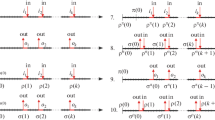Abstract
The article extends the cycle of papers dedicated to programming and verificatoin of PLC-programs by LTL-specification. This approach provides the availability of correctness analysis of PLC-programs by the model checking method. The model checking method application presupposes constructing a finite model of a PLC-program. For successful verification of the required properties it is important to take into consideration that not all combinations of input signals from the sensors can occur while PLC is working with a control object. This fact requires more advertence to the construction of the PLC-program model. In this paper we propose to describe a consistent behavior of sensors by three groups of LTL-formulas. They will affect the program model, approximating it to the actual behavior of the PLC-program. The idea of LTL-requirements is shown by an example. A PLC-program is a description of reactions on input signals from sensors, switches and buttons. In constructing a PLC-program model, the approach to modeling a consistent behavior of PLC sensors allows to focus on modeling precisely these reactions without an extension of the program model by additional structures for design of the realistic behavior of sensors. The consistent behavior of sensors is taken into account only at the stage of checking the conformity of the programming model to required properties, i.e. a property satisfaction proof for the constructed model occurs with the condition that the model contains only such executions of the program that comply with the consistent behavior of sensors.
Similar content being viewed by others
References
Ryabukhin, D.A., Kuzmin, E.V., and Sokolov, V.A., Construction of PLC IL-programs by ITL-specification, Model. Analis Inform. Sist., 2014, vol. 21, no. 2, pp. 26–38.
Kuzmin, E.V., Sokolov, V.A., and Ryabukhin, D.A., Construction and verification of PLC LD-programs by lTL-specification, Model. Analis Inform. Sist., 2013, vol. 20, no. 6, pp. 78–94.
Kuzmin, E.V., Sokolov, V.A., and Ryabukhin, D.A., Construction and verification of PLC-programs by lTL-specification, Model. Analis Inform. Sist., 2013, vol. 20, no. 4, pp. 5–22.
Kuzmin, E.V., Ryabukhin, D.A., and Shipov, A.A., Construction and verification of PLC-programs by lTL-specification, Proc. Int. Conf. “Tools and Methods of Program Analysis”, Kostroma, 2013, pp. 17–34.
Kuzmin, E.V. and Sokolov, V.A., Modeling, specification and construction of PLC-programs, Model. Analis Inform. Sist., 2013, vol. 20, no. 2, pp. 104–120.
Petrov, I.V., Programmiruemye kontrollery. Standartnye jazyki i priemy prikladnogo proektirovanija (Programmed Controllers. Standard Languages and Methods of Applied Design) Moscow: SOLON, 2004.
Clark, E.M., Grumberg, O., and Peled, D.A., Model Checking, The MIT Press, 2001.
CoDeSys. Controller Development System. http://www.3s-software.com/
Parr, E.A., Programmable Controllers. An engineer’s guide, Newnes, 2003.
SMV. The Cadence SMV Model Checker. http://www.kenmcmil.com/smv.html
Author information
Authors and Affiliations
Corresponding author
Additional information
The article is published in the original.
About this article
Cite this article
Kuzmin, E.V., Ryabukhin, D.A. & Sokolov, V.A. Modeling a consistent behavior of PLC-sensors. Aut. Control Comp. Sci. 48, 602–614 (2014). https://doi.org/10.3103/S0146411614070256
Received:
Published:
Issue Date:
DOI: https://doi.org/10.3103/S0146411614070256



